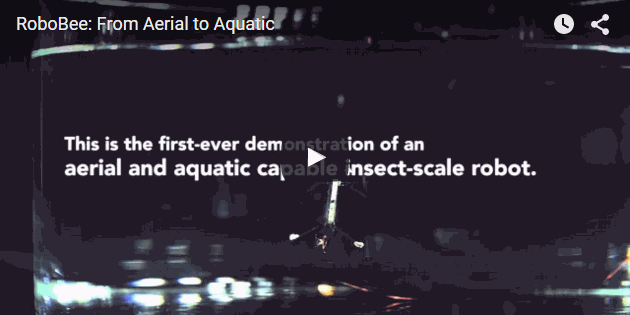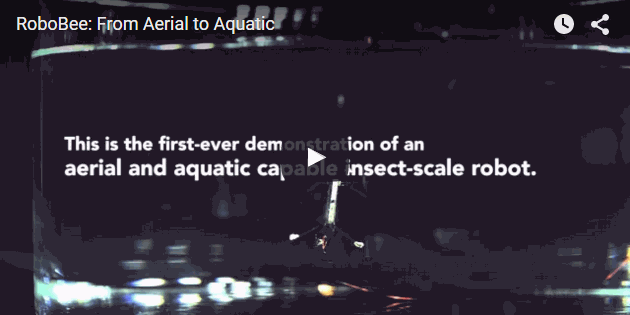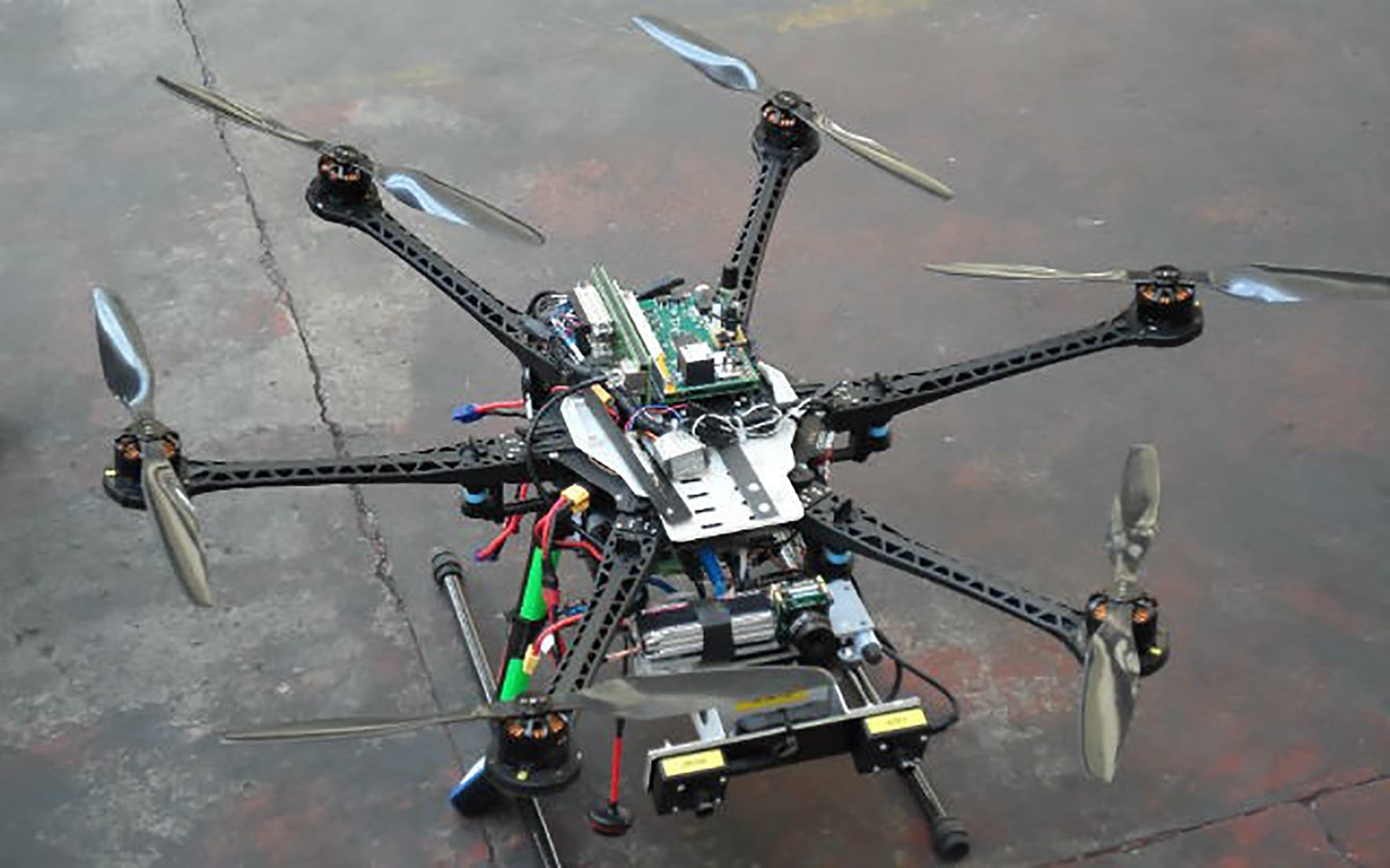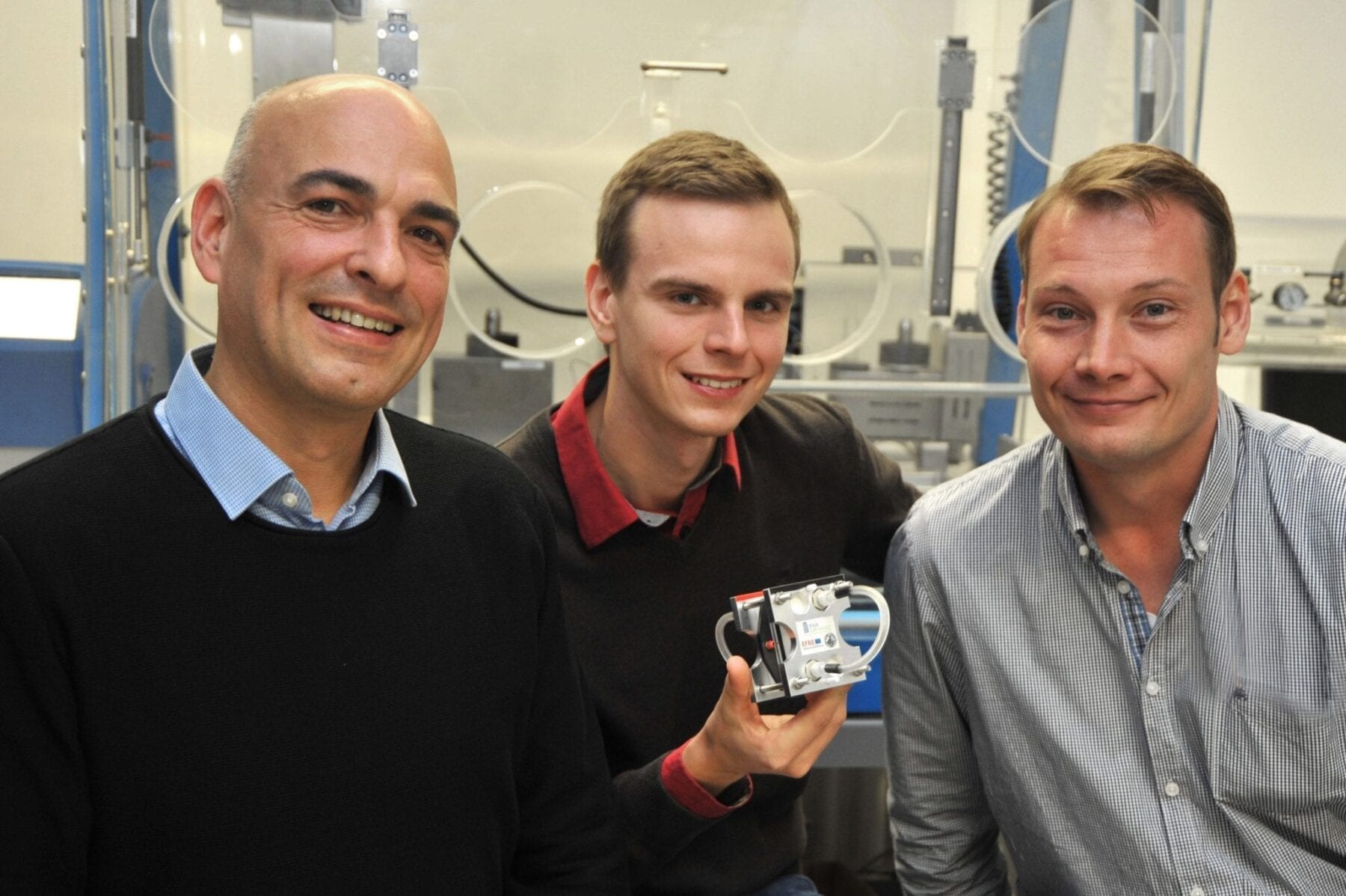
HARVARD MICROROBOTICS LAB DEVELOPS FIRST INSECT-SIZE ROBOT CAPABLE OF FLYING AND SWIMMING
In 1939, a Russian engineer proposed a “flying submarine” — a vehicle that can seamlessly transition from air to water and back again. While it may sound like something out of a James Bond film, engineers have been trying to design functional aerial-aquatic vehicles for decades with little success. Now, engineers may be one step closer to the elusive flying submarine.
The biggest challenge is conflicting design requirements: aerial vehicles require large airfoils like wings or sails to generate lift while underwater vehicles need to minimize surface area to reduce drag.
To solve this engineers at the Harvard John A. Paulson School of Engineering and Applied Science (SEAS) took a clue from puffins. The birds with flamboyant beaks are one of nature’s most adept hybrid vehicles, employing similar flapping motions to propel themselves through air as through water.
“Through various theoretical, computational and experimental studies, we found that the mechanics of flapping propulsion are actually very similar in air and in water,” said Kevin Chen, a graduate student in the Harvard Microrobotics Lab at SEAS. “In both cases, the wing is moving back and forth. The only difference is the speed at which the wing flaps.”
Coming from the Harvard Microrobotics Lab, this discovery can only mean one thing: swimming RoboBees.
For the first time, researchers at SEAS have demonstrated a flying, swimming, insect-like robot — paving the way for future duel aerial aquatic robotic vehicles.
Read more: Dive of the RoboBee
The Latest on: Insect-like robot
[google_news title=”” keyword=”insect-like robot” num_posts=”10″ blurb_length=”0″ show_thumb=”left”]
via Google News
The Latest on: Insect-like robot
- A cicada love story: Bugs, badminton and art projectson May 7, 2024 at 1:34 pm
They can’t bite, can’t sting, can’t run (they can crawl a bit), can’t fly well, can’t harm pets (unless the pets insanely gorge on them), can’t eat anything (they may sip some liquids). In fact, they ...
- UK Startup Employs Insect Intelligence with Opteran Mind, Unlocking Autonomyon May 5, 2024 at 9:20 pm
Opteran's research team has been dedicated to unraveling the mysteries of insect brains. Now, their efforts have culminated in the development of the Opteran Mind.
- Efficient navigational abilities of insects to help transform autonomyon May 5, 2024 at 11:14 am
A UK-based startup has unveiled the Opteran Mind, an edge computing solution comprising a series of insect-inspired algorithms.
- Insect Repellent Buying Guideon May 2, 2024 at 5:00 pm
Our insect repellent ratings identify which products ... And some research suggests that the remote risks associated with deet, like rashes and even seizures, may occur when too much of the ...
- Reverse engineering the insect brainon May 2, 2024 at 7:17 am
UK technology start-up Opteran is on a mission to transform the world of autonomy with advanced “natural intelligence” technology that mimics the brains of insects. Jon Excell reports.
- Meet the BionicBee, The World's Smallest Robotic Insecton May 1, 2024 at 9:51 am
Engineers can’t make them as tiny as real bees, but these robots are small, coming in at only 1.2 oz with a 240 mm wingspan. Autonomous Rather than being piloted like drones, the BionicBees actually ...
- Megaton Musashi W: Wired Is Finally Out, But There's More Content To Comeon April 29, 2024 at 8:30 am
Megaton Musashi W: Wired has finally received a worldwide release, following an original release back in 2021. The game is a mecha hack-and-slash, complete with fully-voiced anime cutscenes and a ...
- Here’s how cockroach-hybrid robots & other badass innovations help keep you & S’pore safeon April 24, 2024 at 8:55 pm
With safety, it’s often a cat-and-mouse game. Scams and deepfakes are continually evolving. And even Singapore is not immune to the effects of global geopolitical tensions and instability. As threats ...
- AI helps researchers understand insect wing design in more detailon April 18, 2024 at 5:00 pm
Moreover, this research establishes a foundation for further exploration of the evolutionary aspects of insect flight, with potential applications spanning both biological and robotic fields.
- How insects control their wings: The mysterious mechanics of insect flighton April 17, 2024 at 5:00 pm
Insect wings, however, have no muscles or nerves. They are instead controlled by muscles located inside the body that operate a system of marionette-like pulleys within a complex hinge at the base ...
via Bing News











